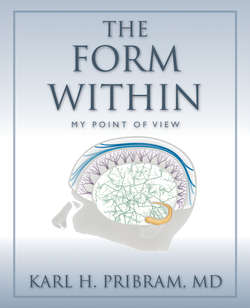Читать книгу The Form Within - Karl H Pribram - Страница 8
На сайте Литреса книга снята с продажи.
The Cortical Primate
ОглавлениеToward the end of the Last Ice Age—about 10,000 years ago—a new breed of primates began to leave its mark on Earth. These creatures possessed a large brain cortex that allowed them to refine—that is, to fine-tune—their experience by reflecting and acting upon it.
In the autumn of 1998, Katherine Neville and I were granted rare private invitations to visit the prehistoric painted caves at Altamira, in Spain. We arrived on a cold, blustery day, and we were happy to enter the shelter of the ancient caves. Despite the many photos we had seen, nothing prepared us for the power of these images, hand colored more than 12,000 years ago. I immediately recalled my colleagues’ attempts to get chimpanzees (who can do so many other things very well) to make paintings. The difference between the crude swishes that the chimpanzees lobbed onto flat surfaces and these detailed figures of gazelles and oxen that adorned the rough stone walls and ceilings in the caves revealed, in a few seconds, the difference between us humans and other creatures. By what process had swipes of ochre been refined into such exquisite painting?
1. Altamira cave painting
What also impressed me was the location of the paintings: Today the floor where we walked is hollowed out, but when the paintings were made, the ceiling was so low that no one could stand erect. During prehistoric times, the painters must have lain on their backs in this restricting passage. Anyone who has tried to cover a ceiling using a paintbrush has experienced the aches that go along with doing something from an unnatural position. And by what light were the paintings executed? There is no evidence in the caves of smoke from torches. How, in that ancient time, did the artists illuminate those caves? Just how and to what purpose did they re-form the world of their caves?
Early human beings refined and diversified—formed —their actions to re-form their world with painting and song. Storytellers began to give diverse meanings to these diverse refinements by formulating legends and myths. In turn, their stories became accepted as constraints on behavior such as laws (modes of conduct) and religious injunctions (from Latin, religare, “to bind together, to tie up”). Today we subsume these forms of cultural and social knowing and acting under the heading “the humanities.”
Along with stories, early human beings began to formulate records of diverse observations of recurring events that shaped their lives: the daily cycle of light and darkness as related to the appearance and disappearance of the sun; the seasonal changes in weather associated with flooding and depletion of rivers; the movements of the stars across the heavens and the more rapid movements conjoining some of them (the planets) against the background of others; the tides and their relationship to the phases of the moon—and these to the patterns of menstrual cycles. Such records made it possible to anticipate such events, and subsequently to check these anticipations during the next cycle of those recurring events. Formulating anticipation of their occurrence gave meaning to our observations; that is, they formed predictable patterns. Today we subsume these patterns, these forms of knowing about and acting on the world we navigate, under the heading “the sciences.”
There has been considerable dissatisfaction among humanists with the materialist approach taken by scientists to understanding our human condition. What has been lacking is a science-based alternative to materialism. Form as “the essential nature” of our concerns provides us such an alternative.
